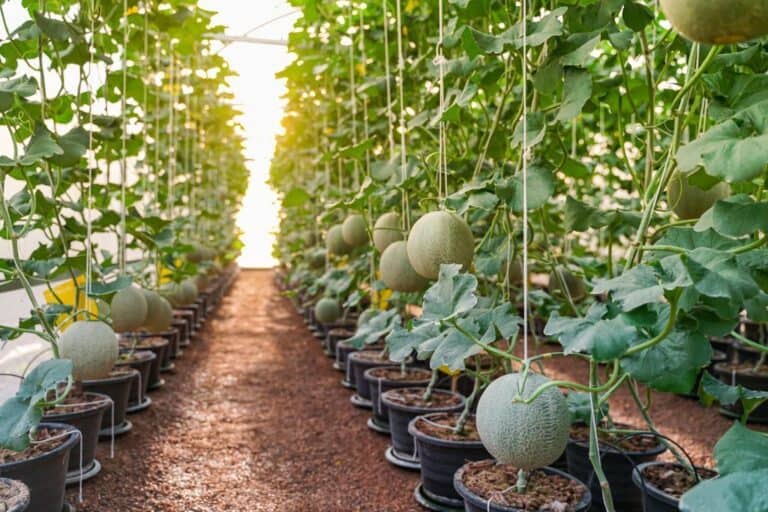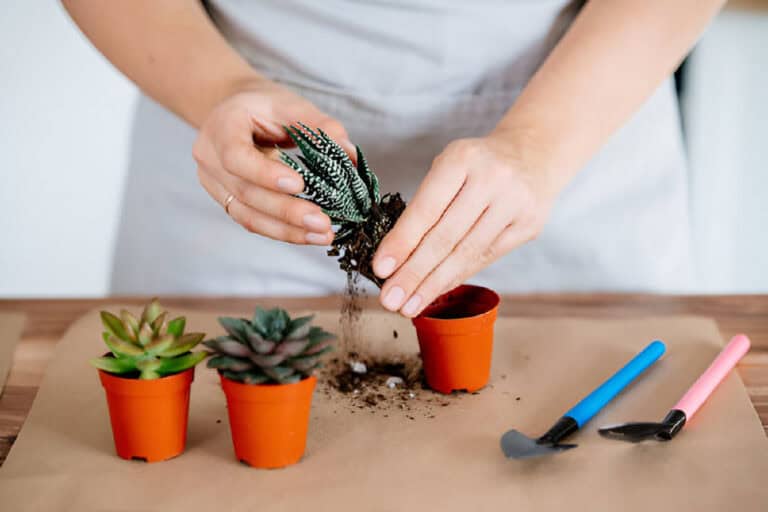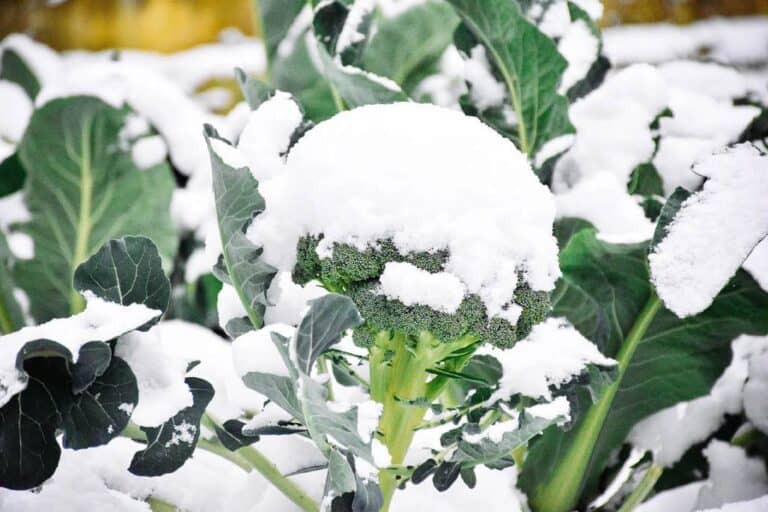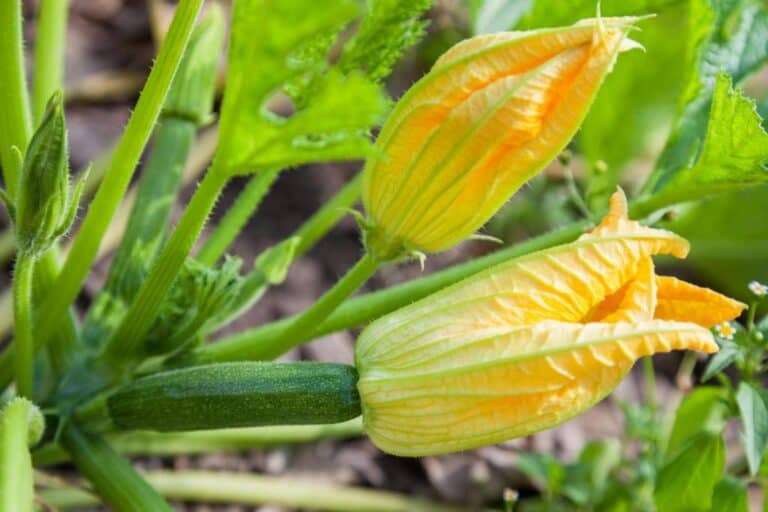How Do You Know When Acorn Squash Is Ripe Inside?
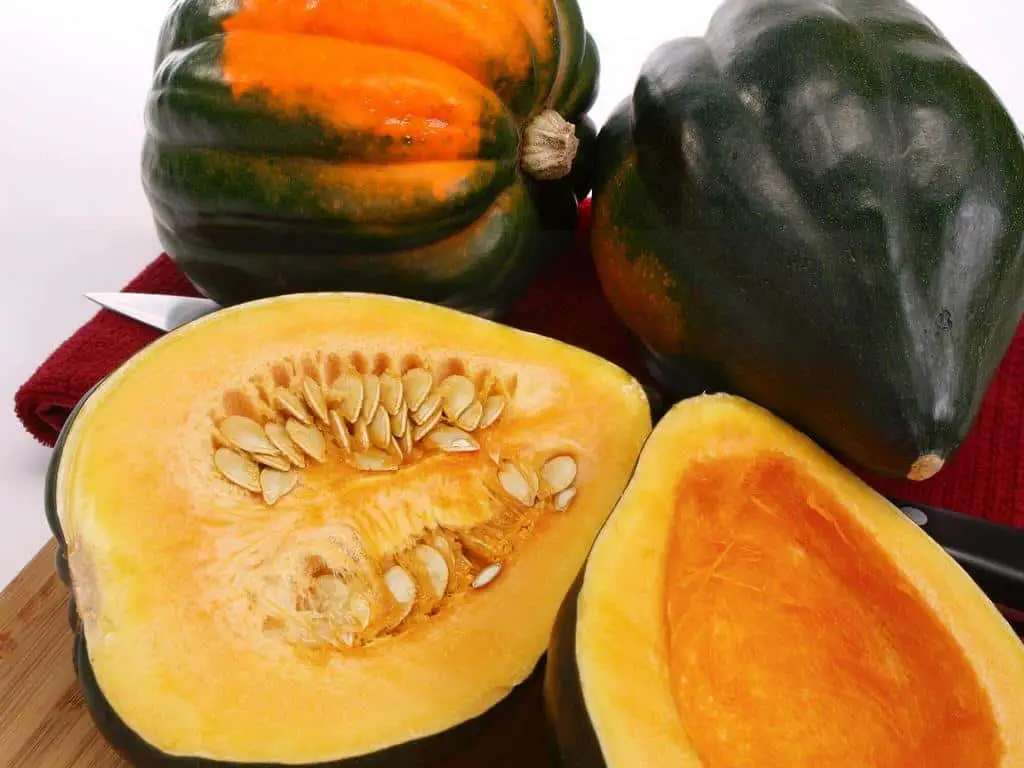
Acorn squash is easy to spot because of its unique shape and bright golden or dark green skin. It has become a favorite in many home gardens. This versatile vegetable not only makes our tables look nicer, but it also makes a lot of recipes taste better and be healthier. However, the key to truly savoring the rich flavors lies in knowing exactly when your acorn squash is ripe inside.
Imagine how satisfying it would be to cut open an acorn squash that has been perfectly ripe. The flesh would be soft and sweet, and the consistency would be just right for cooking.
We’ve all experienced the frustration of cutting into an underripe or overripe squash, resulting in a disappointing taste or difficult preparation. But fear not! With some guidance and keen observation skills, we can ensure that each harvest yields delectable rewards.
In this article, we will uncover the telling signs that indicate an acorn squash’s readiness for harvesting. By understanding these subtle cues from nature itself, you can confidently pick your acorn squashes at their peak ripeness every time.
Get ready to enhance your gardening skills as we delve into practical tips on how to tell if your beloved acorns are truly ripe inside!
How Do You Know When Acorn Squash Is Ripe Inside?
Keep in mind that acorn squash takes about 80 to 100 days to harvest. It is best to harvest during the mature acorn squash fruit stage of growth once the rinds have become tough, which allows for better storage.
Acorn squash is susceptible to frost, so it is important to harvest before the first heavy frost in your area, usually around September or October.
Determining the ripeness of acorn squash involves a combination of visual and tactile cues. Let’s explore the key indicators that will guide you in ensuring your acorn squash is perfectly ripe.
External Skin Color

When it comes to determining the ripeness of acorn squash, external cues can provide valuable clues about its internal state. The skin color is one such indicator that can help you gauge the readiness of your squash for harvest. As acorn squashes mature and ripen, their skin color transitions from a bright green to a deep golden hue or even a dark orange. Keep an eye on this transformation, as it signifies that the flesh inside has reached its peak sweetness and flavor.
See also: Green vs. White Acorn Squash: What Is the Difference Between?
Texture of the Acorn Squash’s Rind
In addition to color, paying attention to the texture of the squash’s skin is crucial. An unripe acorn squash will have a hard and tough exterior, while a ripe one will feature a smoother and softer surface.
Gently run your fingertips over the rind, feeling for any prominent bumps or ridges. If these are absent or less pronounced, it likely indicates that your acorn squash is ready to be enjoyed.
Drying of the Stem
Another external cue worth noting is the drying of the stem attached to your acorn squash. As it approaches ripeness, you may notice a slight shriveling or drying up around where the stem connects with the fruit.
This signals that nutrients are no longer being transported into the vine and that your delicious vegetable is now fully matured inside.
Tapping Method: Sound Quality and Hollow versus Solid Response
One reliable method for determining the ripeness of acorn squash is by tapping on its skin. When gently tapping the squash with your finger or knuckles, pay close attention to the sound it produces.
A mature acorn squash will emit a dull, hollow sound, while an immature one will produce a higher-pitched, solid noise. A ripe one will have a deeper resonance due to its developed seed cavity and fully fleshed interior.
To properly execute this method, cup your hand around the bottom half of the acorn squash while holding it firmly but not too tightly. Lightly tap various areas on its surface and listen closely for variations in sound quality. Keep in mind that if there are any blemishes or soft spots present, they may affect the overall tone.
Acorn Squash Size and Weight
Determining the perfect moment to savor your acorn squash involves evaluating both its overall size and weight. Let’s break down the key factors to consider for this culinary decision.
- Size Matters:
- Mature acorn squashes generally measure between 4 and 6 inches in diameter.
- A squash reaching these dimensions indicates it has had ample time to develop its flavors and nutrients.
- Weight Watch:
- An average weight of 1 to 2 pounds is a solid benchmark for a ripe acorn squash.
- This weight range ensures that the squash has accumulated the right balance of water content, contributing to a succulent and flavorful interior.
Cutting Technique: A Sneak Peek Inside
When it comes to determining the ripeness of acorn squash, a simple cutting technique can provide valuable insights into its readiness for harvest. By carefully slicing open the squash and examining its visual appearance and texture, you can gain a sneak peek into what lies beneath the tough outer skin.
First, take notice of the color inside the acorn squash. A ripe squash will have vibrant orange or yellow flesh that is consistent throughout. If you find any areas with greenish or pale-colored flesh, it is an indication that the squash is not yet fully mature. This ensures a sweet and flavorful eating experience when you eventually enjoy your delicious acorn squash dishes.
Aside from color, texture plays a crucial role in determining ripeness too. As you cut through the squash, observe whether the flesh feels firm but not too hard to yield pressure from your knife. Ripe acorn squash will have tender yet somewhat dense flesh that holds its shape well without being overly fibrous or mushy. Aim for a slight resistance when cutting through it; this indicates optimal maturity and delightful taste!
What Does Ripe Acorn Squash Taste Like?
Ripe acorn squash has a creamy, sweet, and nutty flavor, making it a little sweeter and milder than most other squashes. It is often described as having a mildly buttery taste, similar to that of pumpkin or zucchini, but with an even milder flavor.
Acorn squash’s flesh has a milder flavor and a slightly more fibrous texture than butternut squash, and it has a watery consistency that mutes its sweet, nutty flavor. When cooked, it can be used in a variety of dishes due to its versatile and mild flavor.
Seasonal Timing
Acorn squash is a warm-weather vegetable that requires a longer growing season to reach maturity. On average, it takes anywhere from 80 to 100 days from the time of planting until the acorn squash is ready for harvest. This timeframe can vary depending on factors such as weather conditions and specific varieties of acorn squash.
To accurately determine when your acorn squash will be ripe inside after being picked, keep track of the time since planting and take note of any changes you observe in the squash’s appearance and size. Remember that these timelines are approximate guidelines, so don’t be discouraged if your squash takes slightly longer or shorter than anticipated to ripen.
If you’re unsure about when you planted your acorn squash or worried about keeping track of dates, consider using plant tags or digital garden apps that allow you to record important information like the planting date and expected harvest timeline.
This way, you can easily check back and see how much longer your acorn squashes need before they reach peak ripeness. Having this knowledge will help ensure proper harvesting practices and maximize your yield at just the right moment.
Storage Considerations
Once you’ve determined that your acorn squash is ripe and ready for harvest, it’s important to know how to store it properly to maximize its shelf life. Acorn squash can last several months if stored correctly.
Firstly, it’s essential to clean the outer surface of the squash before storing it. Use a damp cloth or paper towel to wipe away any dirt or debris. This helps prevent bacteria and fungi from spoiling the squash during storage.
Next, choose a cool and dry location for storage. Ideally, this should be a spot where temperatures range between 50 and 55 degrees Fahrenheit (10 and 13 degrees Celsius) with low humidity levels. A basement or cellar is often an ideal location, but an unheated room in your house can also work well.
It’s important to handle acorn squash gently during storage, as any bruising or damage can lead to faster deterioration. Avoid stacking them on top of each other; instead, keep them in a single layer on a shelf or countertop.
By following these guidelines, you can extend the shelf life of your harvested acorn squash significantly and enjoy its delicious flavor well into the winter months!
Conclusion
Determining when your acorn squash is ripe inside can be a bit tricky, but by paying close attention to several key indicators, you can ensure that you harvest it at its peak flavor and texture. Remember, using multiple signs together is often the most reliable method for determining ripeness.
Firstly, check the color of the skin. Ripe acorn squash will have a dark green or orange rind, depending on the variety. Avoid harvesting squashes with large patches of pale green, as they are likely unripe. Secondly, gently press your thumb against the skin—mature acorn squash should feel firm and resist slight pressure.
Next, examine the stem attached to your squash—it should be dry and brown instead of moist or greenish in color. A fully ripe acorn squash will also emit a rich aroma when placed near your nose—take a whiff and see if it smells sweet and earthy.
Lastly, consider overall size and weight; mature acorn squashes will typically reach 4-6 inches in diameter with an average weight of around 1-2 pounds. If all these factors align favorably, congratulations! Your acorn squash is ready to be picked!
By combining these various cues—the color of the skin, firmness when pressed delicately, dried-out brown stems accompanied by fragrant aromas—you’ll become adept at recognizing exactly when your lovely little fruits are perfectly ripe inside. Enjoy this bountiful harvest from your garden!

